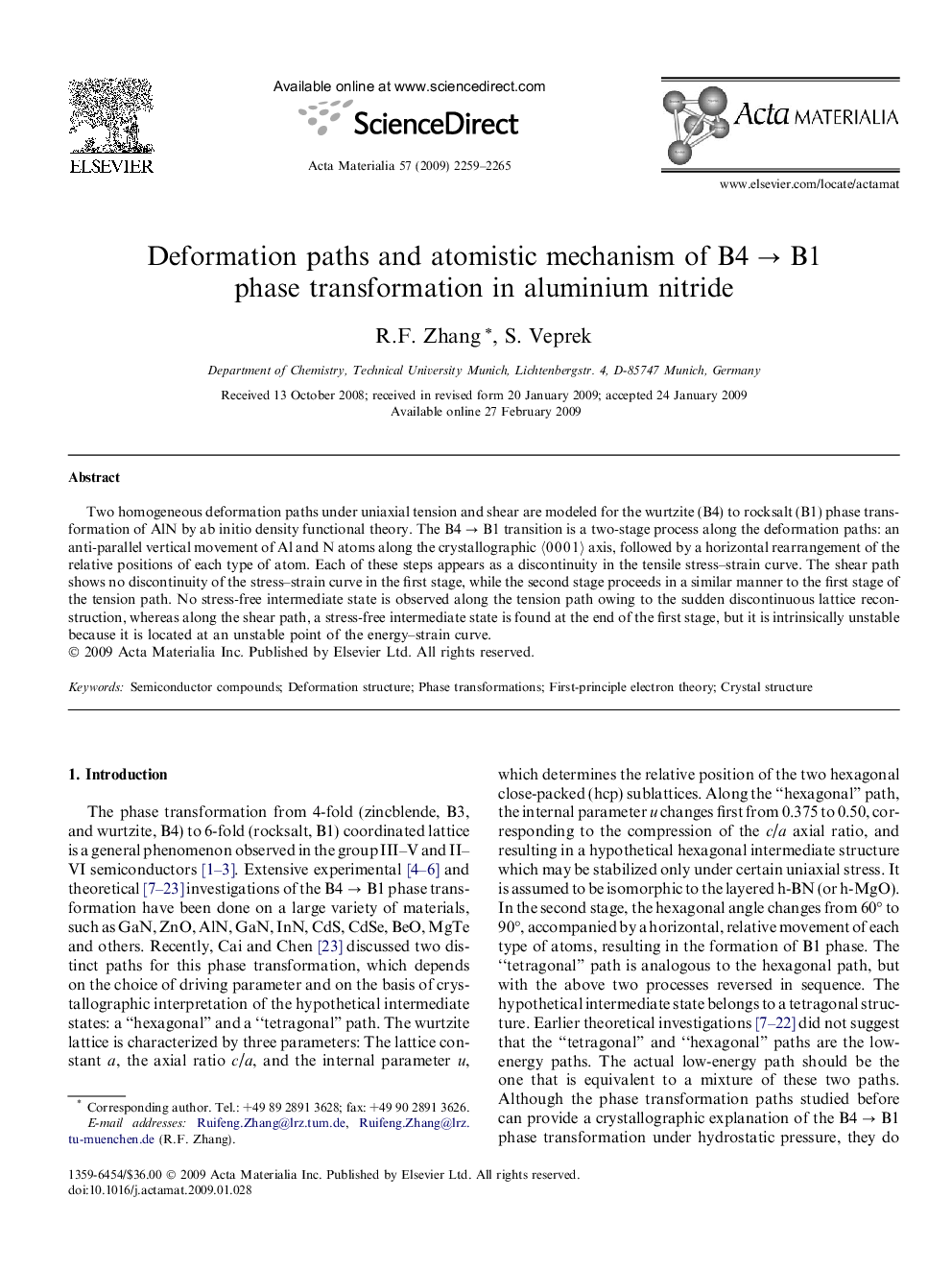| Article ID | Journal | Published Year | Pages | File Type |
|---|---|---|---|---|
| 1448606 | Acta Materialia | 2009 | 7 Pages |
Two homogeneous deformation paths under uniaxial tension and shear are modeled for the wurtzite (B4) to rocksalt (B1) phase transformation of AlN by ab initio density functional theory. The B4 → B1 transition is a two-stage process along the deformation paths: an anti-parallel vertical movement of Al and N atoms along the crystallographic 〈0 0 0 1〉 axis, followed by a horizontal rearrangement of the relative positions of each type of atom. Each of these steps appears as a discontinuity in the tensile stress–strain curve. The shear path shows no discontinuity of the stress–strain curve in the first stage, while the second stage proceeds in a similar manner to the first stage of the tension path. No stress-free intermediate state is observed along the tension path owing to the sudden discontinuous lattice reconstruction, whereas along the shear path, a stress-free intermediate state is found at the end of the first stage, but it is intrinsically unstable because it is located at an unstable point of the energy–strain curve.
